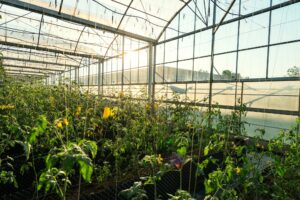For farmers, soil is more than just dirt. It’s the very foundation of their livelihood, a complex living ecosystem teeming with life that nourishes crops and sustains the agricultural cycle. But just like any other living thing, soil health needs to be nurtured and protected.
Why Soil Health Matters
Healthy soil offers a multitude of benefits for farmers:
- Increased Crop Yields: Rich, fertile soil provides plants with the essential nutrients they need to thrive, leading to higher yields and improved crop quality.
- Enhanced Water Retention: Healthy soil acts like a sponge, absorbing and retaining water more effectively. This reduces reliance on irrigation and helps crops weather dry spells.
- Reduced Erosion: Healthy soil with good structure is less susceptible to erosion by wind and water, protecting precious topsoil and preventing nutrient loss.
- Improved Pest and Disease Resistance: A healthy soil microbiome teeming with beneficial organisms helps suppress harmful pests and diseases, reducing the need for chemical controls.
- Enhanced Carbon Sequestration: Healthy soil acts as a carbon sink, capturing atmospheric carbon dioxide and mitigating climate change.
Unfortunately, conventional farming practices like excessive tillage, overuse of chemicals, and monoculture cropping can deplete soil health over time.
Tips and Techniques for Healthy Soil
Here are some practical tips and techniques farmers can adopt to improve and maintain soil health:
- Minimize Tillage: Excessive tillage disrupts soil structure, destroys beneficial microbes, and accelerates erosion. Consider no-till or reduced-till practices to minimize soil disturbance.
- Cover Cropping: Planting cover crops between cash crop cycles adds organic matter to the soil, suppresses weeds, and improves soil structure and fertility.
- Crop Rotation: Rotating crops disrupts pest and disease cycles and helps maintain balanced soil nutrient levels.
- Composting: Composting organic waste from farm operations provides a rich source of nutrients and organic matter for the soil.
- Biofertilizers: Consider using biofertilizers, which contain beneficial microbes, to enhance soil fertility and promote plant growth naturally.
- Mulching: Apply organic mulch like straw or wood chips to retain moisture, suppress weeds, and regulate soil temperature.
- Soil Testing: Regularly test your soil to understand its nutrient profile and pH level. This allows you to tailor fertilizer and amendment applications for optimal results.
Building a Sustainable Future
By adopting these practices, farmers can create a healthy, resilient soil ecosystem that benefits their crops, the environment, and their bottom line. Here are some additional considerations:
- Seek Knowledge: Many resources are available to farmers regarding soil health practices. Connect with local agricultural extension services or research institutions for guidance and support.
- Start Small: Don’t try to change everything overnight. Start by implementing one or two practices and gradually integrate more as you gain experience and observe the positive impact on your soil.
- Patience is Key: Building healthy soil takes time and dedication. Be patient and celebrate the gradual improvements you see in your soil health and crop yields.
By prioritizing soil health, farmers become stewards of a vital resource, ensuring a sustainable and productive future for generations to come. Remember, healthy soil is not just good for your crops, it’s good for the planet. Let’s work together to nurture the foundation of our food system, one healthy handful at a time.


